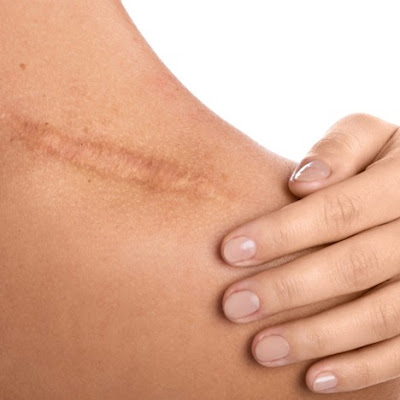A Sharp Blade - The Evolution of Grief and the Understanding of Consciousness
Some weeks ago I was putting away some
flatware in my kitchen when I inadvertently slid my fingertip across the very
sharpest edge of one of my blades.
It stung like the
devil, and shortly there followed the blooming crimson of a very curved line of
my red blood. I did what a lot of others probably do, and that’s immediately
utter a few four-letter words before shoving the fingertip in my mouth and
heading off to treat it with cream and a small bandage.
But the immediate
sting of the wound did not compare to the throbbing ache into which it grew
over the course of next several hours. Any time my hand was in use, that entire
finger pulsed with a heartbeat all its own, and the soreness was still there
for two days after the incident. I vowed to be much more careful when putting
away my utensils in the future, and stocked up on Band-aids just in case.
It was some days
later, however, that I realized that the wound on my finger was very much like
the shock and grief felt at the death of a loved one. There is an initial
sting, followed generally by a period of shock, and then later a dull,
throbbing ache left in the wake of the hollowed-out feeling of loss. My finger,
like my heart before it, would throb with a heartbeat for several days after
the offense against it. Grief is just like that cut from the sharp edge of that
blade.
 |
| Grief leaves its mark. But what will it look like in the future, as we move forward with a better understanding of consciousness and what happens at biomechanical death? |
In all of my thinking
and wondering over death and consciousness, this is the one element that I
cannot seem to negotiate with any reasonable attempt: I cannot fully determine
what grief in our future will become once we fully understand all of the elements
of living and dying. When we dismantle the mystery of consciousness and the
perpetuation of life, will we still view death as death? Once we fully
understand the implications the ubiquity of consciousness, or embrace the
fundamental nature of it as a building block of life, will we mourn and grieve?
As my finger healed
from its cut, it left a mark on my finger. The mark is still there. It’s a
solid white line; the legacy of my encounter with the sharp edge of the blade.
There isn’t pain there now, but the mark remains. And this, too, is my grief:
the pain of loss has subsided, but the nostalgic longing remains. It is likely
that I - we - will be subject to the confines of our tactile senses for as long
as we remain biologically tethered. We will miss seeing and hearing the ones we
have loved - even if we know fundamentally that they have gone nowhere at all.
We will miss the physical details of their life even when we know for certain
that their death was not a death at all. But if science describes for us the
method/process/event of biological death more efficiently, we may come to
realize that the sting of the initial wound - that deep sense of loss - is less
about the loss itself, and more about the loss of tactility.
When we can no longer
experience the love we once knew through sensory data, we feel loss and grief.
Even religious beliefs - no matter how devout - generally do not stem the tide
of grief. But we are closer than ever to understanding or unlocking the
mysteries of life and consciousness - and more and more people (even in science
and academics) are asking the questions that may lead us to answers: what is
life, exactly? What is consciousness? What happens when we die?
And what’s even better? More and more people are seeking the answers to these same questions. We have to keep pushing the envelope - keep asking, keep seeking. Eventually, we will be able to redefine death, and by default, we may render moot the idea of grief, and trade it for something that acknowledges the transcendence from one stage of the journey to another.


.png)